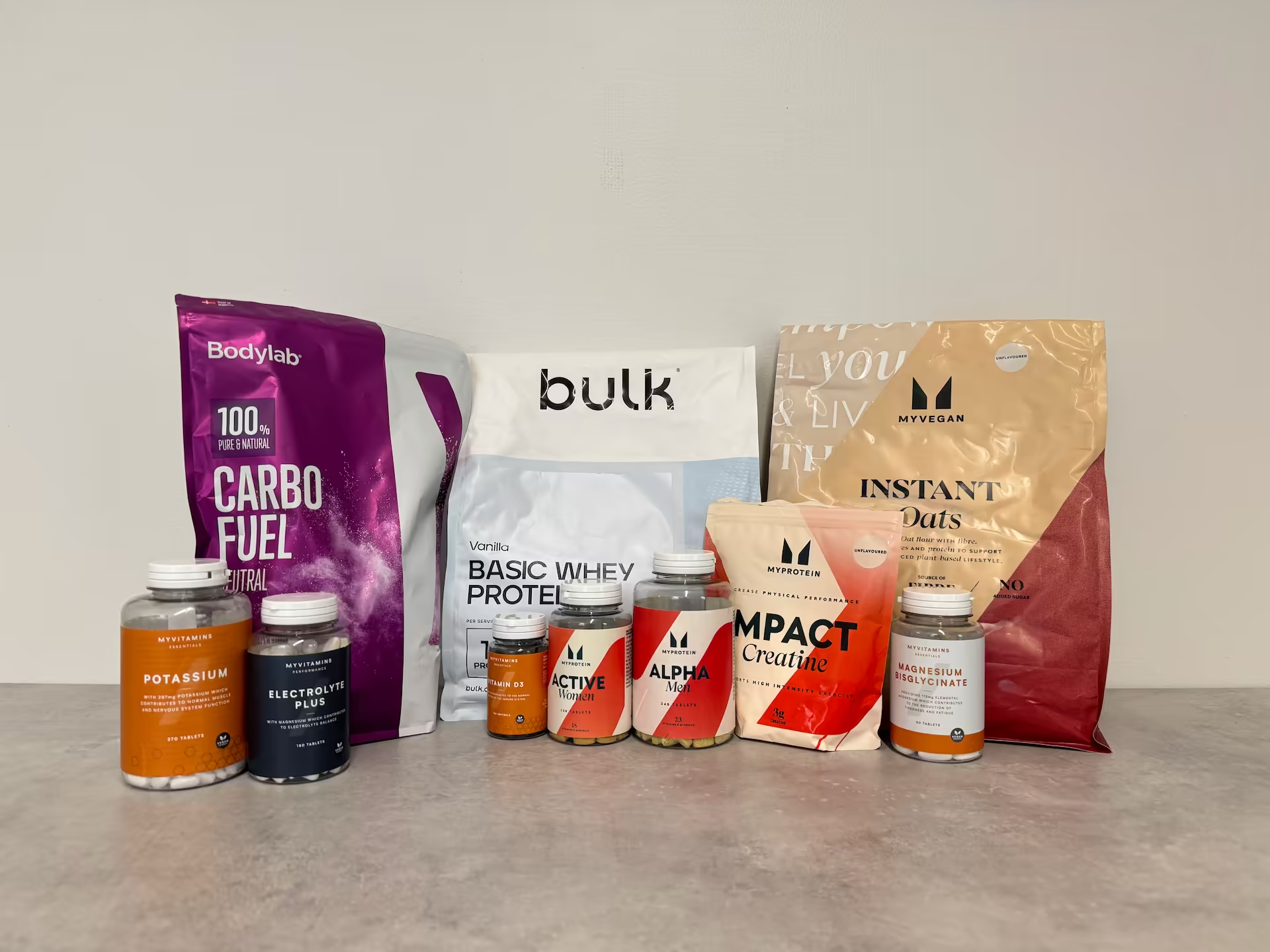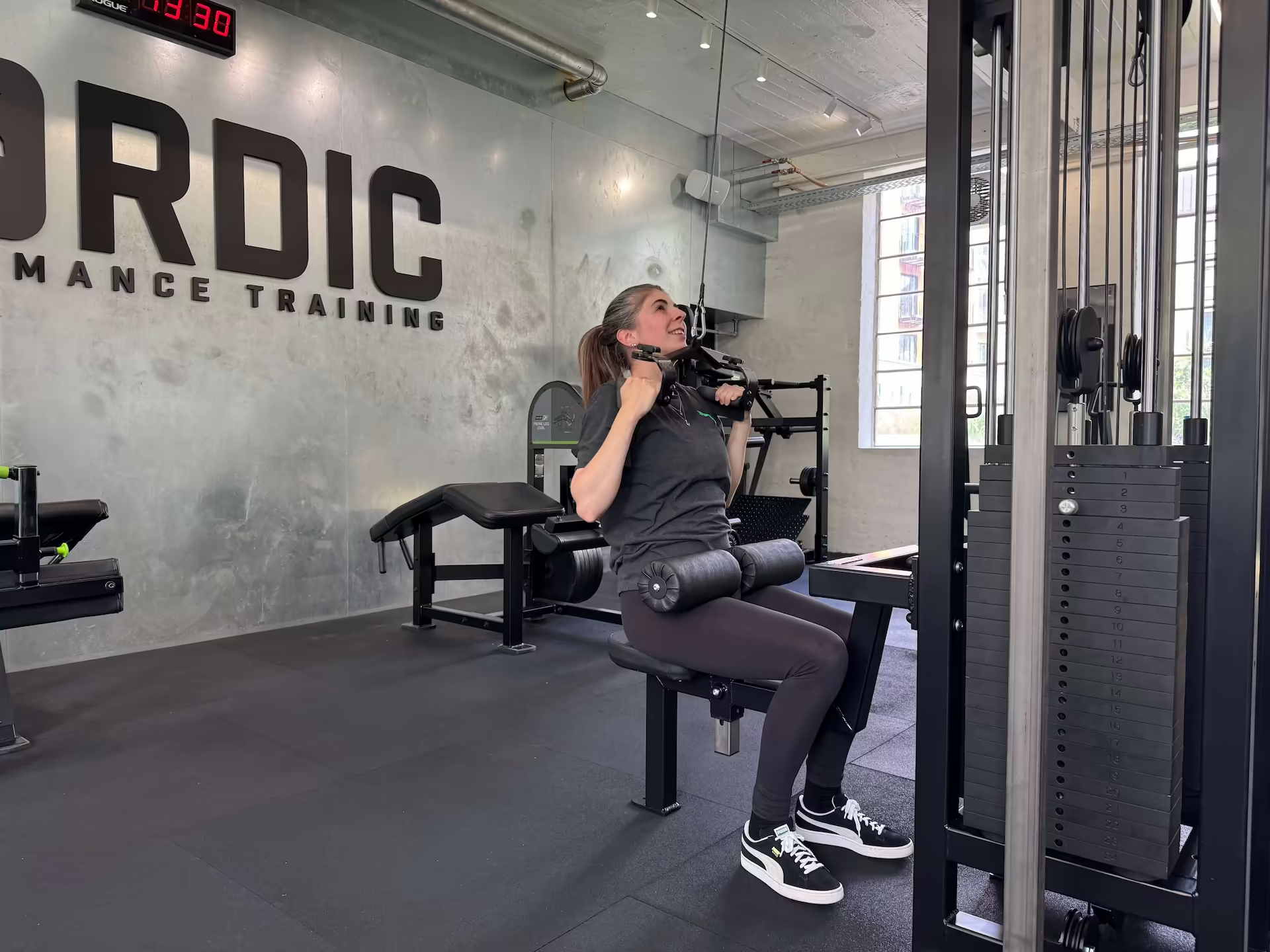Your Ultimate Guide to Running a Great 5K – Regardless of Level
Most people think it should be easy to run 5K. It's just running. A fundamental human ability. But for most adults, reality is different.
Many start with the ambition to get in better shape – but quickly drop out. Not because they lack willpower. But because they go too hard too fast. Start too quickly, run too far, push their body without giving it time to adapt. The result? Soreness, pain, injuries – and the feeling that "running just isn't for me."
We see it often: runners who compare themselves to their 19-year-old selves. "I ran 5K in 25 minutes back then – so I should still be able to do that?" But the body forgets what it doesn't use. "Use it or lose it." If you haven't run in many years, you need to start from scratch – just like with strength training, mobility, and everything else physical.
At Nordic Performance Training in Copenhagen, we've coached hundreds of Copenhageners to their first 5K – from beginners who could barely run 200 meters, to experienced fitness enthusiasts who wanted to break the 20-minute barrier. And if there's one thing we've learned, it's this: Successful 5K training isn't about running as fast as possible, but about doing it structured, progressively – and realistically.
This guide is for you who want to run 5K – whether it's your first or your fastest. We give you three complete 12-week programs tailored to your level, based on physiological principles and practical experience from runners across Copenhagen.
Why Run 5K?
5K is the perfect running distance for fitness enthusiasts. It's long enough to give you significant health benefits, but short enough to fit into a busy everyday life. For a 75 kg person, 5K running means a calorie burn of approximately 450 calories – about the same as 2 Snickers bars.
But it's not the calories that are the biggest gain. It's the feeling of mastering something that felt impossible just a few months ago.
Success Stories from Nordic Performance Training in Copenhagen:
Marie, 31, sociologist from Islands Brygge
Before: Couldn't run 200 meters after the bus to Nørreport Station without getting wildly out of breath. The stairs up from the metro were a struggle every morning.
After 12 weeks with Program 1: Ran 5K around the Lakes in inner city in 32 minutes, participated in her first DHL Relay race and has lost 6 kilos.
"I never thought I could become a 'runner'. Now I plan my day around my runs. It has changed everything – not just my physique, but also my self-image."
Søren, 41, consultant from Frederiksberg
Before: Sat in meetings 10-11 hours daily, felt constantly tired and couldn't keep up with his children aged 6 and 8 in Frederiksberg Gardens.
After 12 weeks with Program 2: Runs 5K in 24-26 minutes, has increased his VO2-max (fitness level) from 37 to 45 and now has energy to play football with his sons after work.
"My goal was just to be able to run without dying. Now I'm considering a half marathon next year and have signed up the whole family for Royal Run."
Lise, 28 years old, nurse at Rigshospitalet:
Before: Lise often worked 12-hour shifts and felt mentally exhausted. She ran almost every day and could complete 5K in 25–26 minutes, but lacked structure in her training, and progress had stalled.
After 12 weeks with Program 3: She ran 5K at the Harbor Race in 19:48 – and now trains less than before.
"I never thought I would be able to run 5K under 20 minutes. Now I actually run fewer times per week, but get much more out of it – both physically and mentally. It has undoubtedly made me a better nurse and a happier person to get structure and meaning in my training."
Research shows that regular running training improves not only fitness and muscle strength, but also sleep quality, mental well-being, and stress resistance. For many of our clients, 5K running doesn't just become exercise – it becomes their daily mindfulness practice.
What is a Good 5K Time?

5K times vary enormously depending on age, gender, training background, and natural conditions. The most important thing is to focus on your own progression rather than comparing with others.
Benchmarks for Different Levels:
Beginners (35–40 minutes): The goal is to complete the distance – good first step!
Lightly trained (30–35 minutes): Solid performance for fitness enthusiasts
Trained (25–30 minutes): Places you in the top 30–40% of Danish recreational runners
Well-trained (20–25 minutes): Requires structured training and experience. A time under 25 minutes places women in the top 10% and men in the top 20%
Elite (under 20 minutes): Requires strong base and specialized training. A time under 20 minutes places men in the top 5–7% and women in the top 1–2%
Remember: A "good" time is a time that represents progress for you. As described in our 5K guide, success is about continuous improvement, not reaching specific benchmarks.
Different Training Types in a Running Program
If you want to get better at running 5K, it's important to combine different types of training. But first and foremost, it's about building good basic fitness and aerobic capacity.
Easy Runs (Z2)
The calm and longer runs are the foundation for all running training. Here you run at a pace where you can talk without getting out of breath (70–80% of your max heart rate). It helps the body get better at using fat as energy and builds up your fitness.
Note: Zone 1 training (50-70% max HR) exists but is primarily used by long endurance athletes who train 10+ hours per week. For 5K runners with limited time, Z2 provides superior aerobic development per training minute.
Why it works: Your body gets better at burning energy, your heart gets stronger, and more small blood vessels (capillaries) form in the muscles. This enables you to run longer and faster.
Tempo Runs and Threshold Training (Z3/Z4)
This is running at a pace that feels hard, but which you can maintain for 20–75 minutes. This corresponds to approximately 80–90% of max heart rate. As a beginner, you can take small walking breaks, as long as the heart rate is kept up.
Note: Technically, tempo runs target Z3 (aerobic threshold) while threshold runs target Z4 (anaerobic threshold), but for practical training purposes, this Z3-Z4 range develops similar adaptations.
Purpose: To train the body to get better at handling the fatigue that comes when you run fast.
Example: 2–3 km mixed walking and running at slightly higher pace (from Program 1).
Interval Training (Z4/Z5)
Here you alternate between shorter periods of hard running and breaks where you walk or run slowly. Intervals can be from 200 to 1200 meters.
Note: Intervals typically mix Z4 and Z5 intensities depending on the length and your fitness level.
Purpose: To improve your fitness and ability to run fast without getting tired immediately.
Example: 6 times 200 meter runs with 2 minutes walking break in between (as in Program 1).
Strides
Short, controlled accelerations of 80-100 meters performed at the end of easy runs. Execute 3-6 strides with 30-60 seconds of fast running (approximately 90% of your sprint speed) followed by full recovery between each repetition.
How to perform: After your easy run, gradually accelerate over 20 meters, hold near-maximum speed for 30-60 seconds, then gradually decelerate. Walk or jog slowly until fully recovered before the next stride.
Why they're invaluable: Strides improve running economy, neuromuscular coordination, and make race pace feel natural without creating fatigue. They're one of the most time-efficient ways to enhance your 5K performance.
If you mix these training types, you get the best benefit from your running training, and you become better and stronger at running 5K.
Before You Start – Important Preparation
Equipment – What You Actually Need
You don't need expensive equipment to run 5K. But the right equipment makes training more comfortable, more precise, and reduces the risk of injury.
Running Shoes - Your Most Important Equipment
The most important equipment is your shoes. You don't need to get a running gait analysis from a shop assistant – unless you're an elite athlete, it's more important that you start with comfort and cushioning rather than biomechanical perfection.
Here are our recommendations based on level:
Beginners: Start with a max cushioned running shoe – soft, shock-absorbing and forgiving, so you can get started without too much soreness.
Lightly trained: Combine a max cushioned shoe for easy runs and a daily trainer or lightweight "race" shoe for faster paces. If the budget only stretches to one shoe, choose a versatile daily trainer.
Experienced runners: We recommend the following rotation:
- Max cushioned (recovery)
- Daily trainer (everyday use and speed sessions)
- Race shoe (test days, PR attempts and competition)
- Bonus: Multiple versions of all the above, if you're a shoe connoisseur
Our favorites running shoes:
Clothing
The best materials for running are polyester, nylon, spandex, bamboo, and merino wool, because they are breathable, sweat-wicking, and flexible. If you want to avoid plastic and fossil-based materials, merino wool and bamboo are an obvious choice – they also have natural antibacterial properties, which reduce odor.
Avoid cotton, as it absorbs moisture, becomes heavy, and increases the risk of discomfort and chafing during running.
Think in Seasons – and Layer Upon Layer
If you want to plan your running clothes a bit more long-term, it makes sense to think in three seasons:
Summer: Here it's about as little and as airy as possible. Choose light materials and short tights or shorts, t-shirt or tank top. Keep focus on breathability.
Spring / Autumn: Use the same basic structure as in summer, but switch, for example, tank top for long-sleeved running shirt, and short tights for long tights or running pants. Layer-upon-layer makes it easy to regulate temperature according to conditions.
Winter: Winter requires a bit more consideration – but you don't need to freeze:
- Start with a long-sleeved base layer (if you get very cold, choose, for example, merino wool)
- Add a slightly thicker shirt or light running jacket on top
- Choose either thermo tights or the combination of tights + loose pants on top
- Merino wool is particularly suitable in winter, because it both warms, breathes, and resists odor.
Small things that make a big difference in winter:
- Waterproof gloves: Choose a slightly larger size than normal, so you can have a thin merino wool glove underneath
- Neck gaiter/snood: Keeps you warm without feeling suffocated and can easily be pulled up when you're cold, or down if you get warm
- Light rain jacket: Ideal in unstable weather – takes up almost nothing and can be taken off along the way
In Copenhagen, the weather changes quickly – if in doubt, take an extra layer with you. It's much easier to take off than to freeze through the run.
GPS Watch and Heart Rate Monitoring
You can go far with free apps like Strava on your phone. But a good GPS watch helps you with:
- Seeing pace and distance in real time
- Measuring your heart rate zones and progression
- Keeping structure in intervals and training plan
A good running watch can quickly become your best friend on runs, keeping you on track and telling you both if you're slacking, but also if you're pushing yourself too hard.
Top 3 GPS Watches:
Apple Watch? Works fine, but is limited in terms of intervals and heart rate data. It's still primarily a smartwatch – not a dedicated running watch.
Personal recommendation: Make sure the watch has music storage - it's just a bit cooler to run with music without having to carry your phone.
Heart Rate Monitor (Extra Precision – Not Necessary)
A heart rate monitor (typically chest strap or armband) can provide much higher accuracy than optical heart rate measurement from your wrist – especially during intervals and tempo runs. It's not a requirement, but a good investment if you want to nerd out more with zones.
Top 3 Heart Rate Monitors:
Conclusion: Start simple. One pair of shoes and a phone app is enough to get started. But if you want to track your progress, understand your zones, and train targeted, a GPS watch and some good running shoes can quickly become your best training partners.
Warm-up, Cool-down and Injury Minimization
Warm-up is important, but it's not a magic solution. Many runners think that a little stretching or some hip swings can prevent injuries – but unfortunately that's not enough. It's especially important to warm up well before harder training like intervals, tempo runs, or threshold sessions. For calm, easy runs (easy runs), thorough warm-up is usually not necessary.
A good warm-up helps reduce the risk of injury on the day, improves your experience during the run, and helps the body find rhythm. But the most important thing to avoid injuries is to take care of your training volume. If you increase distance or intensity too quickly, you significantly increase the risk.
Research shows that around 40% of runners experience injuries each year – and in most cases, it’s due to excessive load, not a lack of warm-up, cool-down, or stretching exercises.
Warm-up (5–10 minutes)
For most people, it's about starting calmly and gradually increasing pace.
Standard warm-up before most running sessions:
- 3–5 minutes slow jog or brisk walk (Z1–Z2)
- 3–5 minutes with varied pace (e.g., short 15-30 second accelerations)
Optional dynamic exercises (especially before intervals or tempo sessions):
- 10 × leg swings forward/backward per leg
- 10 × hip circles per direction
- 10–15 × knee lifts in place
- 20–30 bodyweight squats or 10–15 split squats per leg
These exercises warm up hips, ankles, and legs and improve mobility without draining energy.
Cool-down (5–10 minutes)
Cool-down is not magic and not necessary, but can help finish training calmly.
Standard cool-down:
- 5–10 minutes slow jog, walk/run combination or brisk walk
Optional static stretching (only if it feels good, no documented effect on recovery):
- Calf: 30–60 seconds per leg
- Front thigh: 30–60 seconds per leg
- Back thigh: 30–60 seconds per leg
Important Points
- The harder the training, the more important the warm-up.
- For most recreational runners, it's more important to start calmly, increase gradually, and let the body get used to the load than to do a "perfect" warm-up.
- At Nordic Performance Training, we most often see injuries arise when people start too hard – with too long, too fast, or too frequent training. Slow, structured progression is more important than anything else.
Listen to Your Body – Distinguish Between Soreness and Injury
Normal soreness:
- Diffuse muscle fatigue 24–48 hours after training
- Improves with light movement and heat
- Doesn't affect running style or function
Warning signs of injury:
- Sharp, localized pain during running
- Pain that worsens with activity
- Swelling or visible inflammation
- Pain lasting more than a week
If you experience warning signs, you should take a break and possibly seek help from a physiotherapist or running coach.
Basic Running Technique
The most important first: It's not your running style that determines whether you get an injury. It's how you dose your training.
The most well-documented factor in preventing running-related injuries is what we call load management – that is, how quickly and how much you gradually increase your training volume. This applies regardless of whether you land on your heel, midfoot, or forefoot.
Basic principles in good load management:
- Increase slowly and steadily in volume or intensity
- Listen to your body – beginning pain should be respected, not overruled
- Use appropriate running shoes for your needs
- Ensure enough recovery – sleep, food, and breaks also count
That said, running style can play a role – but not in the way many think. There is no one "perfect" running style, and many of the fastest and most durable runners have running styles that would get criticism from many experts. This doesn't mean that running style is irrelevant – it just means that it should be seen in context with the individual runner's needs, injury history, and preferences.
Good, general advice about running style:
Cadence (step frequency): Research shows that a higher cadence (around 170–190 steps per minute) can improve biomechanics and reduce certain load parameters per step. However, the evidence for direct injury prevention is limited. Shorter, more frequent steps may offer potential benefits – but should always be adjusted to the individual runner’s height, leg length, and natural movement pattern.
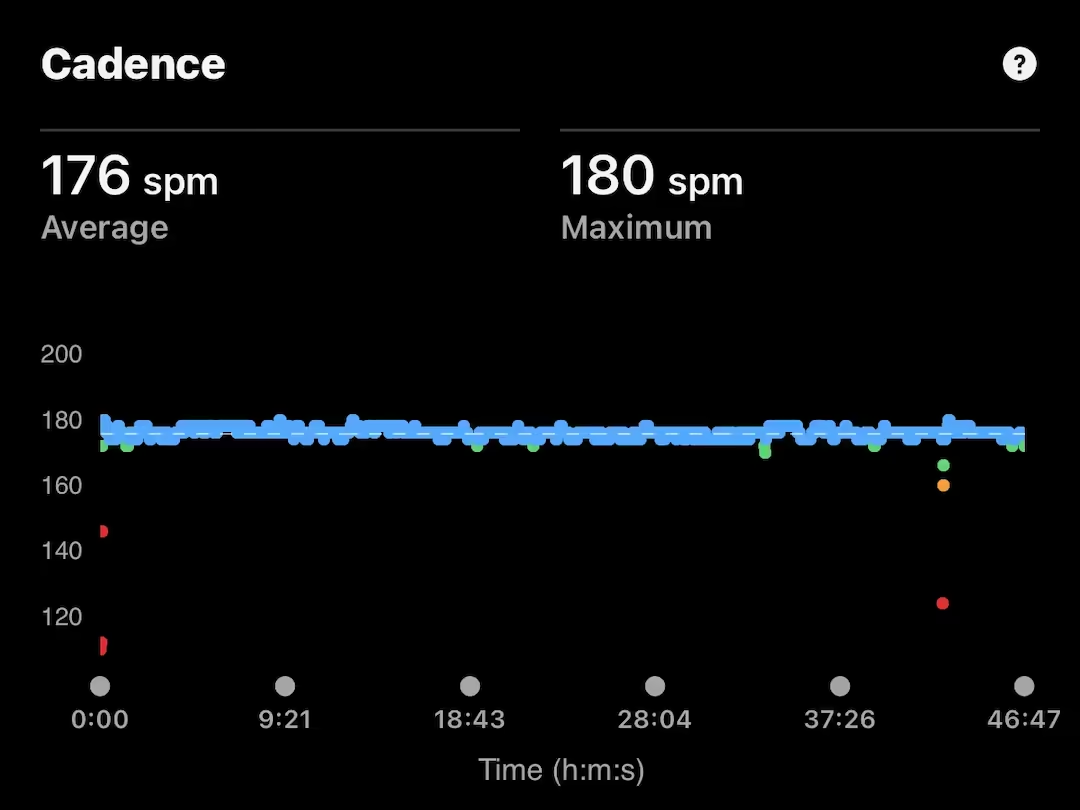
Landing pattern: It's not about heel vs. forefoot. There is no clear evidence that one type of landing is better than others. The most important thing is that you don't over-stride – that is, land with your foot far in front of your body. This creates braking force and increases load. The goal is to land with your foot approximately under your center of gravity – regardless of where on your foot you land.
Body posture: Avoid "sitting back" with bent hips and forward-bent head. Think "long back" and a light, collected forward-leaning body posture – like a 100m sprinter.
Relaxation: Tense shoulders, arms, and hands cost unnecessary energy and discomfort. Aim for a relaxed, elastic run. Lightness and rhythm are more important than precision.
What you should be critical of:
There are many myths about running style – and not all are grounded in reality:
- "You should run on your forefoot" – not necessarily, and for many it can increase injury risk
- "Minimalist shoes prevent injuries" – this is not documented, and many experience the opposite
- "Pronation is dangerous" – pronation is a natural and necessary part of the foot's shock absorption
- "One should correct running style to avoid injuries" – only in cases of persistent problems and always individually.
Conclusion: Focus on What Works
Progressive loading over time is more important than your running style. But if you experience recurring problems, small adjustments in technique can be helpful – preferably with professional sparring.
And remember: an "ugly" running style is not necessarily bad running style. It's efficiency and injury history that count – not aesthetics.
Choose Your Free 5K Program
Here you get 3 structured programs for different starting points. All programs follow the same physiological principles: gradual progression, periodized intensity, and sufficient recovery.
Each program contains 3 weekly running sessions plus 1 optional day for extra base/foundation.
The Last 2 Weeks - Tapering and Peak Performance
The last 2 weeks before your 5K test are critical for optimal performance. Week 11 is your "dress rehearsal," where you practice race pace under controlled fatigue. Week 12 is tapering - reduced volume, but maintenance of intensity, so the body recovers while you maintain sharpness.
Program 1: 0 to 5K (12 weeks)
For you who can barely run 200 meters without pause
This program uses walk/run intervals to gradually build up your aerobic capacity. You start with very short running intervals and extend them week by week. The philosophy is simple: the body adapts to what you expose it to – but only if you do it gradually.
Week 1–4: Foundation and adaptation
- Session 1: 6×200m run (Z3-Z4), 2 min walk break
- Session 2: 20 min continuous walk at moderate pace (Z2)
- Session 3: 6×200m run (Z3-Z4), 2 min walk break
- Optional: 20–30 min easy walk or cycling
Week 5–8: Progression and capacity building
- Session 1: 6×400m run (Z3-Z4), 90 sec walk break
- Session 2: 2–3 km mixed walk/run (Z2-Z3)
- Session 3: 8×200m run (Z4), 90 sec walk break
- Optional: 30 min easy walk or cycling
Week 9–10: Specialization and continuity
- Session 1: 4×800m run (Z4), 2 min walk break
- Session 2: 3–4 km mixed walk/run (Z2-Z3) – goal: mostly running
- Session 3: 6×400m run (Z4), 90 sec walk break
- Optional: 30–40 min light activity
Week 11: Dress rehearsal week (incl. test)
- Monday: 3 km mixed walk/run (mostly running)
- Wednesday: 3×800m at comfortable pace, 2 min walk break
- Friday: Rest or 2 km easy walk
- Sunday: 4 km test run – run as much as you can without walk breaks
Week 12: Taper and race week
- Monday: 2 km easy walk/run + 3×200m strides
- Wednesday: 4×400m at comfortable pace, 90 sec break
- Friday: Rest or 15 min easy walk
- Sunday: 5K test run – complete at your own pace
Pacing tip: Start calmly. The most important thing is to complete – walk breaks are allowed.
Program 2: From 35 to 25 minutes (12 weeks)
For you who can run 5K and want to improve your time
This program focuses on running economy, threshold, and VO2-max. You now train to become more efficient and faster – not just to complete.
Week 1–4: Improve aerobic base
- Session 1: 4×600–800m intervals (Z4-Z5), 2 min break
- Session 2: 6–8 km easy run (Z2-Z3) + 4 strides
- Session 3: 15 min threshold (Z3-Z4)
- Optional: 4–6 km easy run
Week 5–8: VO2-max focus
- Session 1: 5×800m intervals (Z4-Z5), 90 sec break
- Session 2: 7–9 km easy run (Z2-Z3) + 5 strides
- Session 3: 20 min threshold (Z3-Z4)
- Optional: 5–7 km easy run
Week 9–10: Specialization and race feel
- Session 1: 6×800m intervals (Z4-Z5), 90 sec break
- Session 2: 8–10 km easy run (Z2-Z3) + 6 strides
- Session 3: 25 min threshold (Z3-Z4)
- Optional: 6–8 km easy run
Week 11: Dress rehearsal week (incl. test)
- Monday: 6 km easy run (Z2) + 4 strides
- Wednesday: 3×1000m at goal pace (e.g., 5:00/km), 2 min break
- Friday: 4 km recovery jog
- Sunday: 4 km test run at 5K pace
Week 12: Taper and race week
- Monday: 4 km easy + 4 strides at 5K pace
- Wednesday: 4×600m at race pace, 90 sec break
- Friday: 3 km shakeout or rest
- Sunday: 5K test run – goal: faster than week 11
Pacing tip: Start 10–15 sec/km slower than goal pace the first 2 km. Use the rest to build up.
Program 3: From 25 to under 20 minutes (12 weeks)
For experienced runners with solid base and high ambitions
Focus on VO2-max, running economy, and race specificity. You train in and around 5K pace with high quality and minimal waste.
Week 1–4: Expand aerobic base
- Session 1: 4×1000m intervals (Z4-Z5), 2 min break
- Session 2: 8–10 km easy run (Z2-Z3) + 6 strides
- Session 3: 25 min threshold (Z3-Z4) or session 1 again
- Optional: 6–8 km easy run
Week 5–8: VO2-max focus
- Session 1: 5–6×1000m intervals (Z5), 2 min break
- Session 2: 10–12 km easy run + 6–8 strides
- Session 3: 25 min threshold (Z3-Z4) or session 1 again
- Optional: 8–10 km easy run
Week 9–10: Specialization and sharpness
- Session 1: 5×1200m intervals (Z4-Z5), 2 min break
- Session 2: 10–12 km easy run + 6×100m strides
- Session 3: 20 min threshold + 4×300m (Z5)
- Optional: Light activity
Week 11: Dress rehearsal week (incl. test)
- Monday: 8 km easy (Z2) + 6 strides at race pace
- Wednesday: 3×1000m at goal pace (e.g., 4:00/km), 2 min break
- Friday: 5 km recovery jog + 4×100m strides
- Sunday: 4 km test run – all-out
Week 12: Taper and race week
- Monday: 5 km easy + 6 strides at 5K pace
- Wednesday: 5×400m at race pace, 90 sec break
- Friday: 3 km shakeout + 4 strides
- Sunday: 5K test run
Pacing tip: Start at exact goal pace. Aim for negative split – you've trained for it.
Guide to Intensity Zones / Heart Rate Zones
For many new runners, training terminology can seem confusing. Here's a simple, practical guide to how you should train at different intensities.
Zone 2 - Easy pace (Conversation pace)
This is your base pace. You should be able to speak in complete sentences during running. If your running partner asks "Where should we run next time?" you should be able to answer a complete sentence without being interrupted by breathing.
- Approximately 70-80% of your maximum heart rate
- Feels "comfortably hard" – you can physiologically continue for several hours if your legs allow it.
- This builds your aerobic base and makes up the majority of your total running training
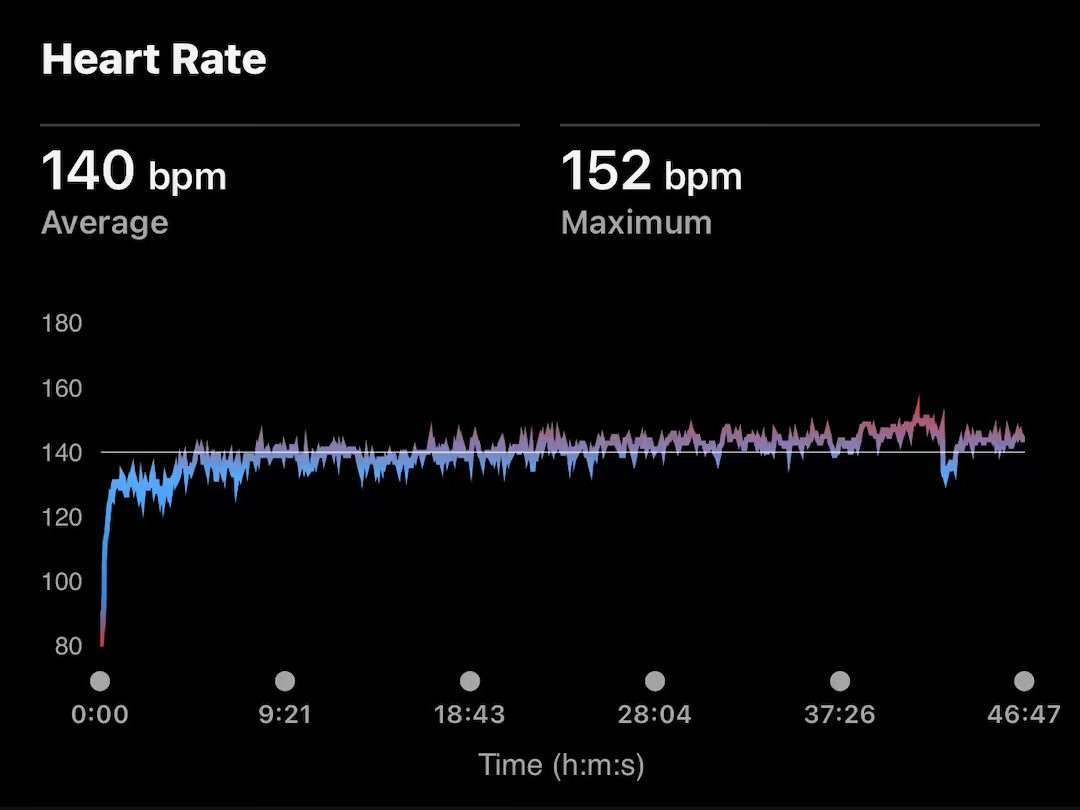
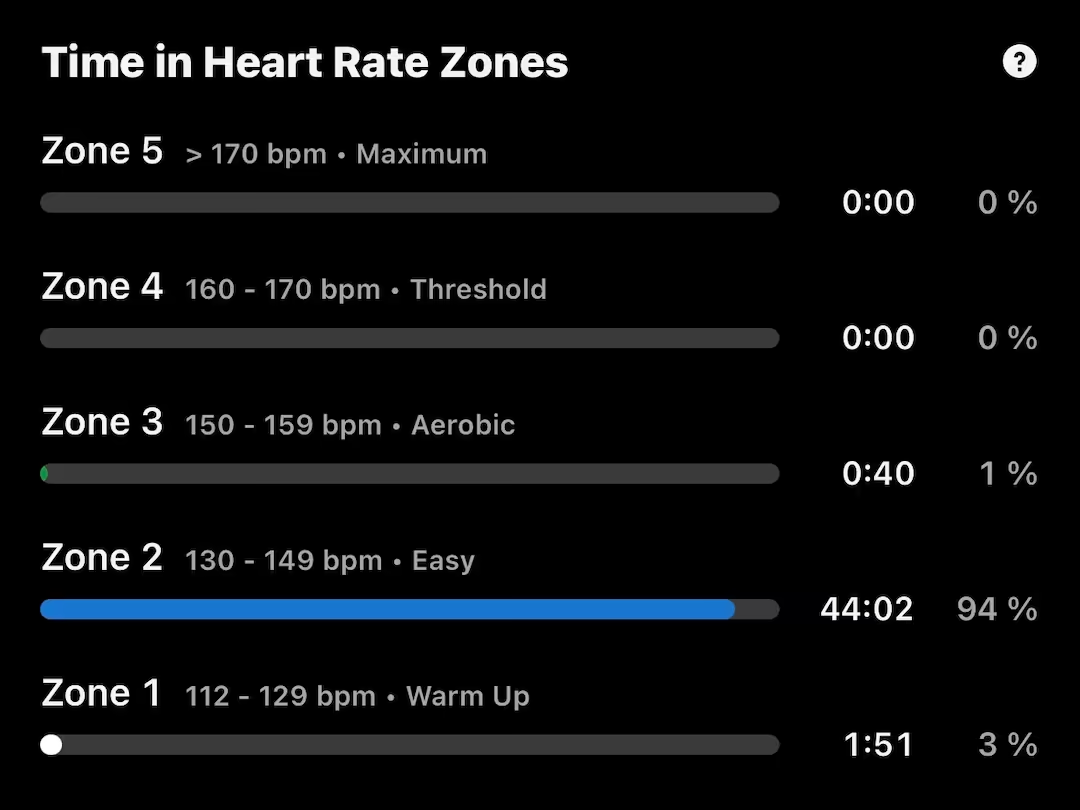
Zone 3-4 - Tempo/Threshold (Comfortably hard)
You can say individual words or short sentences, but not hold a longer conversation. You're conscious of your breathing, but not out of breath.
- 80-90% of your maximum heart rate
- The pace you can hold for 20-75 minutes depending on level.
- Improves your "anaerobic threshold" – the point where lactic acid begins to accumulate
- Feels challenging, but controllable
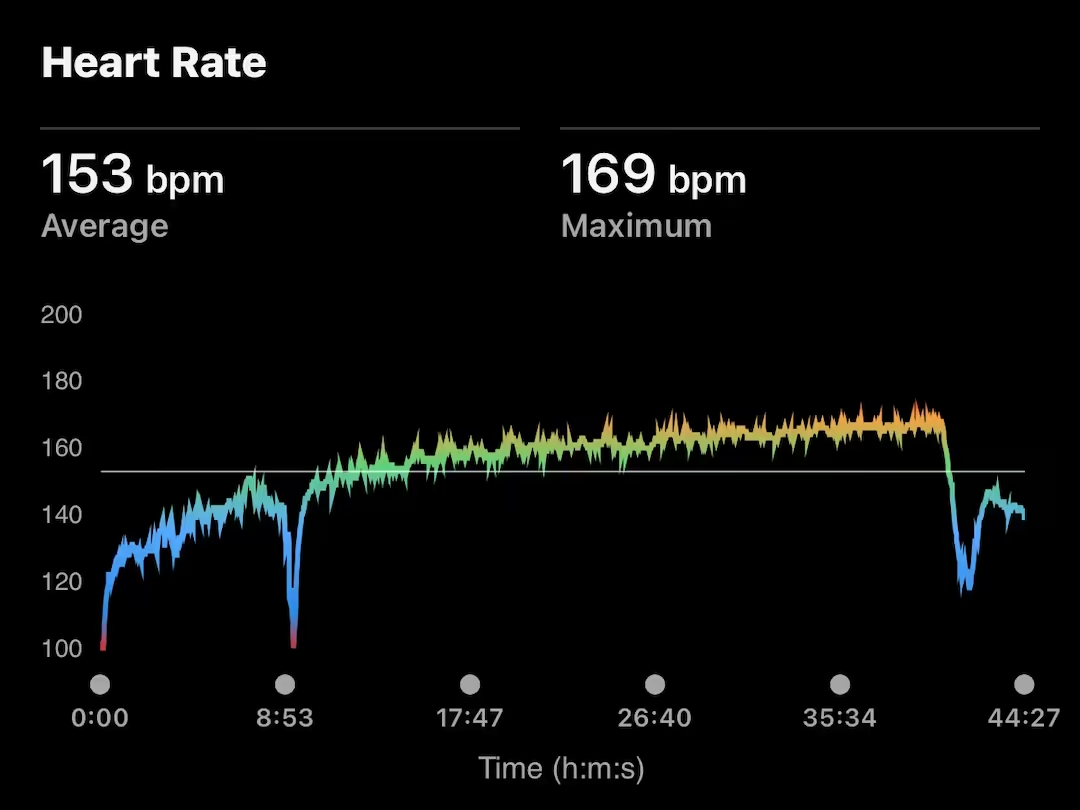
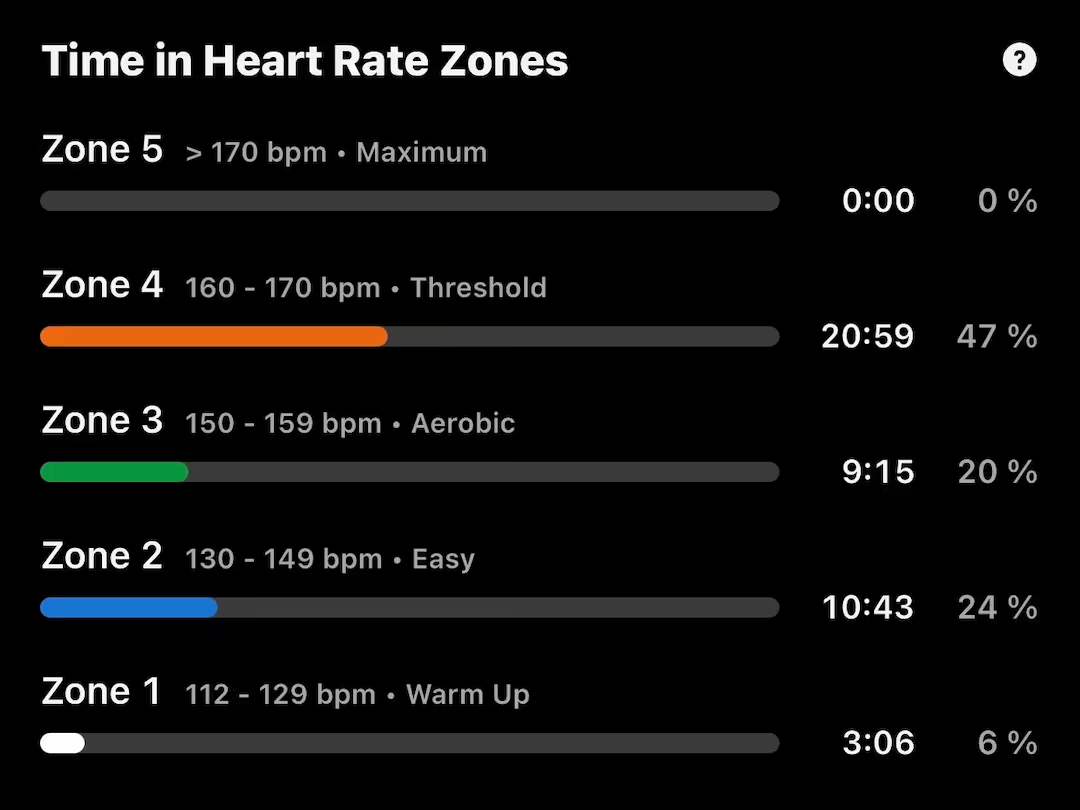
Zone 4-5 - (Intervals - Hard work)
Zone 4 – “Very Tough”
- You can only say individual words. Breathing is heavy but controlled.
- 80–90% of max HR — close to your 5K pace.
- Feels hard, but sustainable for 15–30+ minutes.
- Builds VO₂-max, improves lactate clearance, and raises your sustainable speed.
Zone 5 – “Everything You Have”
- Speaking is impossible. Full focus is on completing the effort.
- 90–100+% of max HR.
- Typically sustainable for 1–5 minutes, depending on level.
- Develops maximum oxygen uptake and neuromuscular power.


Practical Intensity Control Without a Heart Rate Monitor
Many beginners don't have a heart rate monitor. Here are alternative methods:
Talk Method:
The most reliable for beginners. Try to say "I'm running around the Lakes right now" during running:
- Z2: You can say the entire sentence naturally
- Z3-Z4: You need to take 1-2 breaths in the middle of the sentence
- Z4-Z5: You can only say "I'm running" before you need to breathe
- Z5: You cannot speak at all
RPE Scale (Rate of Perceived Exertion) 1-10:
- Z2: 5-6/10 (light-to-moderate effort)
- Z3-Z4: 7-8/10 (hard effort)
- Z4-Z5: 8-9/10 (very hard effort)
- Z5: 10/10 (maximum effort)
The Science Behind the Zones
Each intensity zone stimulates different physiological adaptations:
Z2 training develops your cardiovascular system, increases the number of mitochondria in your muscles, and improves fat burning. It's the foundation for all running.
Z3-Z4 training improves your body's ability to transport and use oxygen efficiently. It raises the speed you can run without accumulating lactic acid.
Z4-Z5 training pushes your heart-lung system to maximum capacity and improves your neuromuscular power – the ability to run fast when it counts.
All three zones are necessary for optimal 5K performance. The programs balance them strategically to maximize your results.
Strides Explained
Strides are 80-100 meter accelerations that improve your running economy without creating fatigue.
How to perform strides:
- Jog (Z2)
- Accelerate gradually over 20 meters to approximately 90% of your top sprint
- Hold the speed for 2-3 seconds
- Decelerate gradually over 20 meters
- Jog on and ensure heart rate stays down
- Repeat 2-3x more
When: After easy runs (Easy Runs), when muscles are warm, but before you're tired. Never on rest days.
Purpose: Improves your running style, neuromuscular coordination, and makes high speeds natural. Many runners discover that their 5K time improves significantly just by adding strides 2 times weekly.
Personal recommendation: I like to do 3-4 strides at the end of my easy runs but never allow the heart rate to remain up, as it's still an easy run.
Running Routes, Motivation & Practical Advice
Maintain Continuity by Making It Easy
The biggest challenge in 5K training is not physical, but mental. Here are concrete strategies that work:
Plan Your Running Route – Copenhagen's Best 5K Routes:
Harbor Promenade: Flat, scenic route along the water with minimal traffic. Avoid weekends if you want to avoid crowds. Perfect for easy runs and even some tempo.
The Lakes: Classic Copenhagen running route. If you take all the lakes it's about 6km. Avoid weekends if you want to avoid crowds. Perfect for easy runs and if you stick to one lake and therefore avoid traffic lights, intervals can also be an option.
Frederiksberg Gardens: Lightly rolling terrain and gravel paths. You can make a really good 2.5km route and possibly add Søndermarken for 5K. Ideal for interval running and tempo sessions, as there's no traffic.
Fælledparken: Large, open areas perfect for interval stretches and strides. Soft grass surface. Perfect for most things.
Amager Beach Park: Flat, wide path without traffic or traffic lights with sea view. Perfect for all types and all distances. You can easily make running routes up to 10-12km without encountering traffic.
Choose 2-3 fixed routes, so you don't have to use mental energy on navigation. Variation keeps it interesting, but too much variation creates decision fatigue.
Train at the Same Time
Your best intentions mean nothing if training competes with everything else in your calendar. Many of our clients in Copenhagen find success with:
- Morning runs (6:30-7:30): Fewer people, fresh air, starts the day positively
- Lunch break (12:00-13:00): Perfect for short training sessions, but requires planning
- After work (16:00-18:00): Good way to "switch gears" between work and leisure
- Before bedtime (20:00-22:00): May be necessary but not optimal as it can be difficult to fall asleep.
Find a Running Partner or Group
Accountability works. Consider:
- Running with a good friend or partner
- Colleague with the same goal and schedule
- Online communities like Strava groups for Copenhagen runners
- Local running clubs like Sparta, FIF, or Copenhagen Marathon
Diet, Supplements and Timing
You don't need to revolutionize your diet to run 5K, but some simple adjustments help:
- 2-3 hours before running: Light meal with carbohydrates (oats, banana, rye bread, granola bar)
- 30-60 minutes after running: Combination of protein and carbohydrates
- Fluid: Drink 200-400 ml water 15-20 minutes before running. On runs under 45 minutes, sports drinks and gels are not necessary.
Remember! Better to need to pee than to dehydrate.
If you want to supplement with some supplements, you can advantageously read our article [What Are Supplements? Expert Advice from 3000+ Clients] or [Top 5 Best Supplements for Health and Training [2025 Guide]].
Rest Days are Training Days
Recovery is not inactivity – it's active rebuilding. On your rest days:
- Take light walks (Amager Beach Park, Fælleden, The Lakes, or a bit of shopping for more running shoes on Strøget, Fields, or Fisketorvet)
- Focus on good sleep (7-9 hours)
- Remember to strength train!
Strength Training for Runners
One of the most overlooked factors in running training is strength training. Many runners think that more running training automatically makes them better runners, but research shows something else.
Structured strength training improves your running economy, significantly reduces injury risk, and makes you faster – without needing to run more kilometers.
Benefits of Strength Training for Runners:
Injury prevention: Strong muscles, tendons, and joints are better able to withstand the repeated impact of running. Research shows that targeted and structured strength training can significantly reduce the risk of injury – but it requires the right approach.
Improved running economy: Stronger leg and core muscles mean you use less energy maintaining your running position. This translates directly to better times.
Increased power: Strength training develops explosive power, which makes you faster in the last critical kilometers of your 5K run.
Better posture: A strong core and back helps you maintain good running technique, even when you get tired.
At Nordic Performance Training, we recommend all our running clients supplement their running training with 1-2 weekly full-body strength training sessions.
A good full-body program trains all the major muscle groups systematically and progressively. It only takes 50-60 minutes to complete and can easily be combined with your running program without creating unnecessary fatigue.
Many of our clients discover that this combination doesn't just make them faster runners – it makes them stronger and more resilient in all areas of life.
For concrete strength training programs designed for everyone also runners, read our guide: [Full Body Program (1–3 Days/Week): Why Less Really Is More [2025 Guide]].
Frequently Asked Questions
How long does it take to run 5K for a beginner?
It takes about 35-45 minutes (7-9 min/km) for most beginners to run a 5K. The most important thing is to complete the distance – speed comes naturally with training.
Is 30 minutes on 5K a good time?
Yes, under 30 minutes (6 min/km) is a solid performance for recreational runners. It places you in the top 40% of Danish recreational runners.
How many calories do you burn on 5K?
You burn about 1 kcal per kg body weight per km. A 70 kg person burns approximately 350 calories, an 80 kg person approximately 400 calories.
Can you train up to 5K in 4 weeks?
Yes, if you already have good basic fitness. For real beginners, we recommend 12 weeks to avoid injuries and create lasting habits.
How often should you run to improve?
You should preferably run 2-3 times a week to improve optimally. This provides sufficient training stimulus with enough recovery for the body to adapt.
What do I do if I get pain during running?
If you get pain during running, you should generally continue training a few hundred meters more and see if it doesn't go away - it does in most cases. If it continues and there's sharp pain, and you're very concerned - then stop immediately and seek health professional advice. Always listen to your body and consult with your health professional.
Conclusion
Running 5K is not about talent or special physical conditions. It's about following a structured plan, listening to your body, and maintaining continuity through 12 weeks.
Regardless of which program you choose, remember that:
- Progression happens gradually – be patient with the process
- Some weeks will feel easy, others difficult – that's normal
- Recovery is just as important as the training itself
- The most important run is the next run
After you've completed your first 5K, new opportunities open up. Maybe you'll want to improve your time further, try the 10K distance, or participate in one of Copenhagen's many running events like Royal Run, DHL Relay, or Copenhagen Marathon.
Some of our clients have used their 5K success as a springboard to half marathon or even full marathon. Others have continued to enjoy 5K as their preferred distance and focus on getting faster or running in different areas of the city.
The most important thing is that you start. Choose the program that fits your level, put your first run in the calendar, and take the first step out the door.
If you want professional guidance for your running training or want to combine running with structured strength training to maximize your results and reduce injury risk, we offer free consultation calls where we can discuss how we best support your goals.
Remember: Every expert was once a beginner. Your 5K journey starts now.
Referencer
Kakouris, N., Yener, N., & Fong, D.T.P. (2021). A systematic review of running-related musculoskeletal injuries in runners. Journal of Sport and Health Science, 10(5), 513–522. https://pubmed.ncbi.nlm.nih.gov/33862272/
Oliveira, P.S., Boppre, G., & Fonseca, H. (2024). Comparison of polarized versus other types of endurance training intensity distribution on athletes' endurance performance: A systematic review with meta-analysis. Sports Medicine, 54(8), 2071–2095. https://doi.org/10.1007/s40279-024-02034-z
Wu, H., Brooke-Wavell, K., Fong, D.T.P., Paquette, M.R., & Blagrove, R.C. (2024). Do exercise-based prevention programs reduce injury in endurance runners? A systematic review and meta-analysis. Sports Medicine, 54(5), 1249–1267. https://doi.org/10.1007/s40279-024-01993-7
Gabbett, T.J. (2016). The training-injury prevention paradox: Should athletes be training smarter and harder? British Journal of Sports Medicine, 50(5), 273–280. https://doi.org/10.1136/bjsports-2015-095788
Anderson, L.M., Martin, J.F., Barton, C.J., & Bonanno, D.R. (2022). What is the effect of changing running step rate on injury, performance and biomechanics? A systematic review and meta-analysis. Sports Medicine - Open, 8, 112. https://doi.org/10.1186/s40798-022-00504-0
Casal-Hernandez, S., Martin-Miguel, I., Escriche-Escuder, A., Alonso-Calvete, A., & Abecia-Inchaurregui, L.C. (2024). Risk factors for running-related injuries: An umbrella systematic review. Journal of Sport and Health Science. https://pubmed.ncbi.nlm.nih.gov/38697289/
Related Blog Posts
.svg)
.svg)

.svg.webp)






